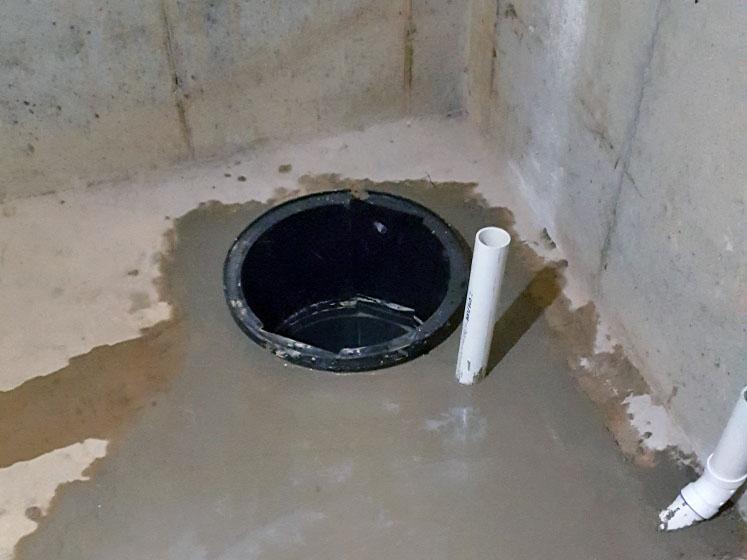The Guide to Properly Servicing a Sump Pump
The Guide to Properly Servicing a Sump Pump
Blog Article
Just how do you really feel about Steps to Cleaning Your Sump Pump Properly?

Sump pumps are vital components in many homes, especially in areas susceptible to flooding or excessive wetness. They aid prevent water damage by successfully getting rid of excess water from basements or crawl spaces. Nonetheless, like any other appliance, sump pumps need routine maintenance to guarantee they work efficiently when required the most. Cleansing your sump pump is a crucial part of its maintenance, and understanding exactly how to do it correctly can conserve you from expensive repair work and potential disasters.
Intro
Preserving a clean sump pump is vital for its appropriate performance and durability. Disregarding this crucial job can lead to clogs, breakdowns, and eventually, water damage to your residential property. For that reason, finding out exactly how to cleanse a sump pump is important for property owners who count on these devices to keep their basements dry and protected.
Signs of a Dirty Sump Pump
Knowing when your sump pump requires cleansing is vital for preventing possible malfunctions. Some usual signs that show a dirty sump pump consist of weird sounds during operation, lowered water flow, and visible debris in the pit. If you discover any of these symptoms, it's important to clean your sump pump quickly to stay clear of any type of more issues.
Planning for Cleaning
Before you start cleaning your sump pump, it's essential to take some safety and security precautions. Start by turning off the power to the pump to stay clear of any electric mishaps. Furthermore, put on ideal safety equipment, such as handwear covers and goggles, to safeguard yourself from dust, particles, and potential microorganisms.
Recognizing the Sump Pump
Before diving right into the cleansing procedure, it's necessary to have a standard understanding of just how a sump pump works. Usually mounted in a pit or basin below the cellar flooring, a sump pump contains a number of key elements, consisting of a pump, a float switch, and a discharge pipeline. When water builds up in the pit, the float switch triggers the pump, which then pumps the water out with the discharge pipeline, far from the structure's foundation.
Detailed Overview to Cleaning Up a Sump Pump
Turning off the Power
Begin by disconnecting the power supply to the sump pump to prevent any kind of accidents while cleaning.
Checking for Correct Functioning
Before re-installing the pump, perform a quick test to ensure that the float switch activates the pump appropriately. Pour some water right into the sump pit and observe the pump's procedure. If everything is working appropriately, you can reconstruct the pump and reconnect the power supply.
Removing Particles and Dust
Utilize a pail or a scoop to remove any type of noticeable particles, dirt, or debris from the sump pit. Dispose of the particles effectively to stop it from obstructing the pump or the discharge pipe.
Cleaning up the Pump and Drift Switch Over
When the pit is clear of debris, thoroughly remove the pump from the pit. Examine the pump and the float button for any type of signs of damage or wear. Make use of a soft brush or fabric to cleanse the surfaces and get rid of any type of collected gunk.
Flushing the System
After cleaning up the pump and float switch, flush the sump pit with tidy water to remove any staying dust or debris. This will help make certain that the pump runs smoothly and effectively.
Upkeep Tips to Maintain Your Sump Pump Clean
In addition to routine cleansing, there are several upkeep pointers you can comply with to keep your sump pump in optimum condition:
Verdict
Cleaning your sump pump is a critical element of its maintenance and guarantees that it operates efficiently when you need it the most. By complying with the steps described in this guide and incorporating routine maintenance right into your regimen, you can expand the life-span of your sump pump and shield your home from water damages.
6 STEPS ON HOW TO CLEAN A SUMP PUMP PROPERLY
UNDERSTANDING SUMP PUMPS
Your sump pump plays a crucial role in protecting your home by managing and removing excess water. It primarily functions as a “shield”, guarding your basement against the damaging effects of water accumulation. The pump is housed in a sump pit in the lowest part of your basement, and its job is to pump out any water that collects there.
During heavy rainfalls or when snow melts rapidly, water can infiltrate your basement, posing potential risks like flooding, structural damage, and harmful mold growth. Here, the sump pump springs into action, pumping out the intruding water and directing it away from your home.
SAFETY FIRST
Before cleaning, remember to prioritize safety. Disconnect the sump pump from the power source to prevent any accidental electric shocks. Also, wear sturdy gloves to protect your hands from any sharp or dirty components within the pump.
REMOVE THE SUMP PUMP
After ensuring your safety, the next step is to remove the sump pump from its pit. Doing this might require careful maneuvering as you don’t want to damage any pump components. Once removed, clean the sump pit to remove any accumulated debris or sludge.
INSPECT THE PUMP
Inspect the pump for any visible signs of wear or damage. Check the power cord, float switch, and impeller housing. If any components look worn out or damaged, consider replacing them to ensure optimal performance.
CLEAN THE PUMP
Thoroughly clean the pump with warm, soapy water. Make sure to rid it of any dirt, gravel, or other debris that might impede its performance. You can use a toothbrush to clean the small, hard-to-reach parts of the pump.
REINSTALL THE SUMP PUMP
Reinstall the pump into the sump pit Make sure it’s positioned correctly to remove the water effectively Once it’s back in place, reconnect it to the power source TEST THE PUMP
Finally, pour some water into the pit to ensure the pump works correctly. It should start automatically and begin pumping out the water; if it doesn’t, check the power source and the positioning of the pump.
Remember, while cleaning your sump pump is an essential part of home maintenance, hiring a professional plumber for a thorough inspection and cleaning at least once a year is also important. This will ensure that your pump is in optimal condition, ready to protect your home from potential water damage.
BEST PRACTICES FOR CLEANING SUMP PUMP DISCHARGE PIPES
Regular Inspection: Regularly inspect your discharge pipes, especially during heavy rainfall or snowmelt periods. Look for any signs of blockage or damage. Early detection of problems can prevent serious issues down the line. Periodic Cleaning: Over time, sediment and debris can accumulate in the discharge pipes, impeding the flow of water. Regular cleaning helps keep the pipes clear and functioning efficiently. You can use a high-pressure water jet to effectively clean the pipes. Insulation During Winter: In colder climates, discharge pipes can freeze, blocking the outflow of water. Protect your discharge pipes from freezing temperatures by insulating them with foam pipe insulation. This will ensure the sump pump can continue to discharge water even in freezing conditions. Proper Positioning: The discharge pipe should be positioned to direct water away from your home’s foundation. Improper positioning can lead to water seeping back into the basement. Ensure the pipe is long enough and angled correctly. Installation of a Check Valve: A check valve prevents water from flowing back into your sump pit after the pump has pushed it out. Installing a check valve helps maintain the efficiency of your sump pump and reduces the risk of flooding. Minimize Pipe Turns: Every curve or turn in the discharge pipe can decrease the efficiency of water flow. By minimizing turns and bends in your discharge pipe, you can increase the efficiency of your sump pump. https://www.fullspeedplumbing.com/how-to-clean-a-sump-pump-properly9999/

I hope you liked our excerpt on How To Effectively Clean A Sump Pump. Many thanks for spending some time to read our posting. I beg you take the opportunity to share this page if you appreciated it. We take joy in reading our article about Steps to Cleaning Your Sump Pump Properly.
Request Estimate Report this page